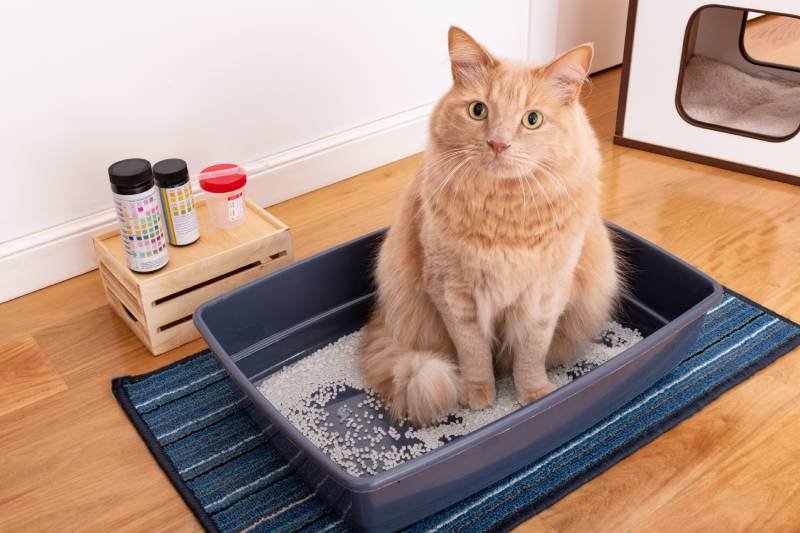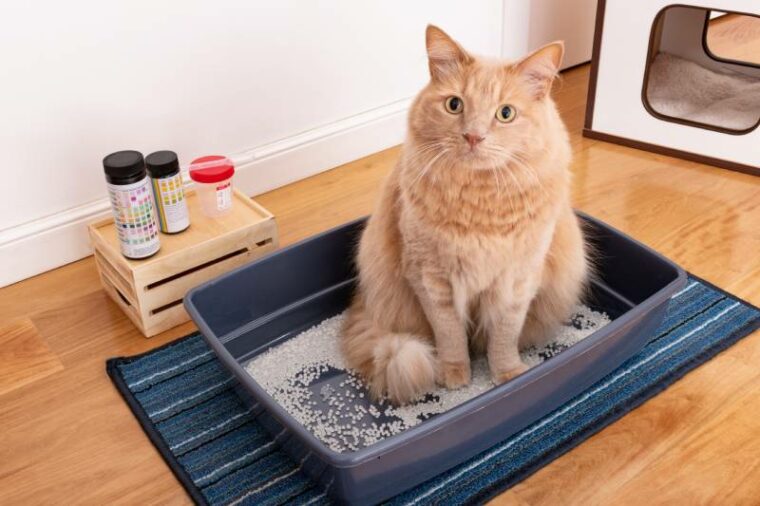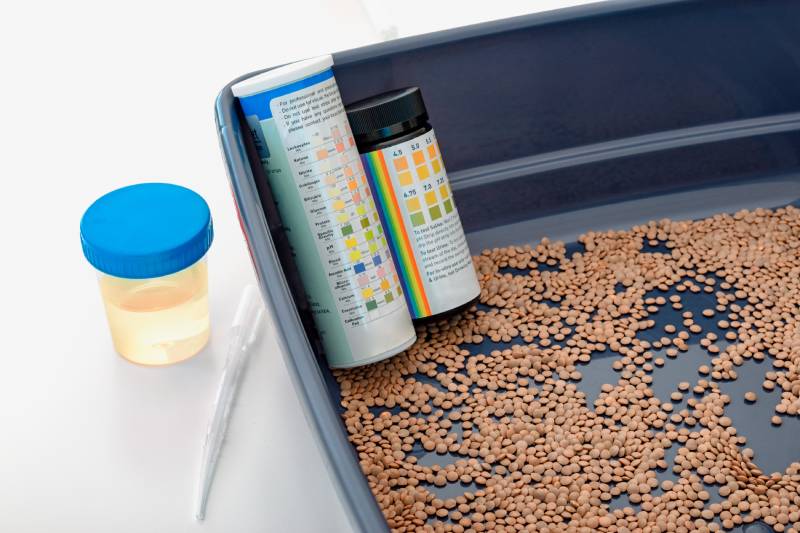
[ad_1]

Health monitoring cat litter is a relatively new invention that provides insight into your cat’s health by changing color if it detects any health issues. While it sounds ideal, is it too good to be true?
Read on to learn how color-changing cat litter works and whether it’s worth the higher cost.

What Is Health Monitoring Cat Litter?
Health monitoring cat litter claims to provide insight into your pet’s health by analyzing their urine. Most of these litters are made from silica gel crystals versus traditional clay so they can be coated with a safe and specialized pH detector. Though these litters are not intended to diagnose your kitty, they may be able to help you catch issues as they develop when it’s still easy to treat them.

How Does Health Monitoring Cat Litter Work?
Health monitoring litter is essentially cat litter that changes color depending on your cat’s health. It generally works by reacting to the pH of your cat’s urine. The crystals come out of the box or bag colorless but can change color according to the pH levels of your cat’s pee. When your kitty’s pee comes into contact with the litter crystals, it can turn one of several colors.
Let’s look at Pretty Litter, for example. This is perhaps the most well-known health monitoring litter on the market. If the litter turns dark yellow or olive green after your kitty uses it, it indicates healthy and “typical” urine. If the litter turns blue, your cat’s urine is more alkaline than is typical, which can indicate certain kinds of urinary tract infections. Orange litter indicates a more acidic urine, which may mean your kitty has a medical issue.
Finally, litter that turns red means blood is present in your cat’s urine. This is important as it can tell you that your cat has bladder crystals, urinary tract disorders, or certain kinds of kidney diseases.
Is Health Monitoring Kitty Litter Worth It?
There are some things to consider before dropping your hard-earned cash on health monitoring litters.
1. It Doesn’t Provide a Diagnosis
It’s important to remember that health monitoring cat litter is designed to be a tool, not a diagnosis. It’s also essential you recognize that any results from your cat litter could be inaccurate. Unlike dogs, cats rarely have pH changes with bladder infections, or urinary stones, therefore, you may miss many of the issues the litter is designed to detect. Additionally, the color changes in the litter can be hard to distinguish and not as easy to read as the litter manufacturers would lead you to believe.
While health monitoring litter can provide some vague insight into your cat’s health, only a licensed veterinarian can make a diagnosis.

2. Not All Cats Like It
Most health monitoring litters are made of an amorphous silica gel, a safe and non-toxic material. The silica gel crystals are highly absorbent and non-clumping, properties some cat owners may prefer. However, studies show that most cats prefer smaller litter pellets, which can include clay-based litter. Switching your picky kitty from his preferred clay-based litter to one of silica gel construction could spell disaster. It can lead to inappropriate litter box habits, such as eliminating outside of the box and an outright refusal to use the litter altogether.
3. It’s Pricey
Health monitoring cat litter can be expensive, especially for a multi-cat household. Using Pretty Litter as an example again, their website claims you can provide litter for a single cat for $24 per month. However, a single bag will not be enough for two or more cats.
Ultimately, how much you’ll spend on your litter will depend on several factors, including the size of your litter box, your cleaning diligence, the size of your cats, and their food consumption. If we’re using Pretty Litter as an example again, you can expect to pay between $22 and $24 per bag.


Frequently Asked Questions (FAQ)
Are all health-monitoring cat litters made with silica gel?
It looks like silica gel is the main component of most health-monitoring cat litter. Sometimes the silica gel is called “crystals”.
How long can I use this litter?
It is important to remove any urine or feces from a cat’s litter box daily to ensure the husbandry of your cat (and the smell of your house!). The same goes for health monitoring litter. However, many of these health-monitoring litters need to be changed and replaced with fresh litter every 20 to 30 days (as with many other litters).
Our Favorite Products
Incorporating Hepper’s Advanced Bio-Enzyme Pet Stain & Odor Eliminator Spray and Litter Deodorizer fights even the toughest litter box smells. First, by keeping your litter box free of stuck-on messes each time you replace the litter, and second, by neutralizing odors upon contact.
Hepper Advanced Bio-Enzyme Pet Stain & Odor…
Hepper Advanced Bio-Enzyme Cat Litter Deodorizer…
Eliminates odor on contact
Hepper Advanced Bio-Enzyme Pet Stain & Odor…

Eliminates odor on contact
Hepper Advanced Bio-Enzyme Cat Litter Deodorizer…

Eliminates odor on contact
At Pet Keen, we’ve admired Hepper for many years, and decided to take a controlling ownership interest so that we could benefit from the outstanding designs of this cool company!

Final Thoughts
So, is health monitoring kitty litter worth it? It depends entirely on you and your cat. If your budget allows for it and your cats aren’t picky about the type of litter they use, health monitoring litter can be a potential tool to keep tabs on your kitty’s health, though cats often don’t have the necessary pH changes in their urine to activate the litter when urinary issues develop. Therefore, it is important to remember that the litter may not be the most accurate way to determine the health of your pet, and it alone shouldn’t be used to diagnose your kitty with any health conditions. Always speak to your vet about any concerns you have regarding potential health conditions.
Featured Image Credit: Yaya Photos, Shutterstock
[ad_2]
Source link


